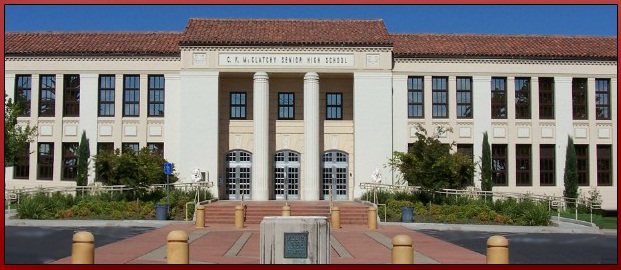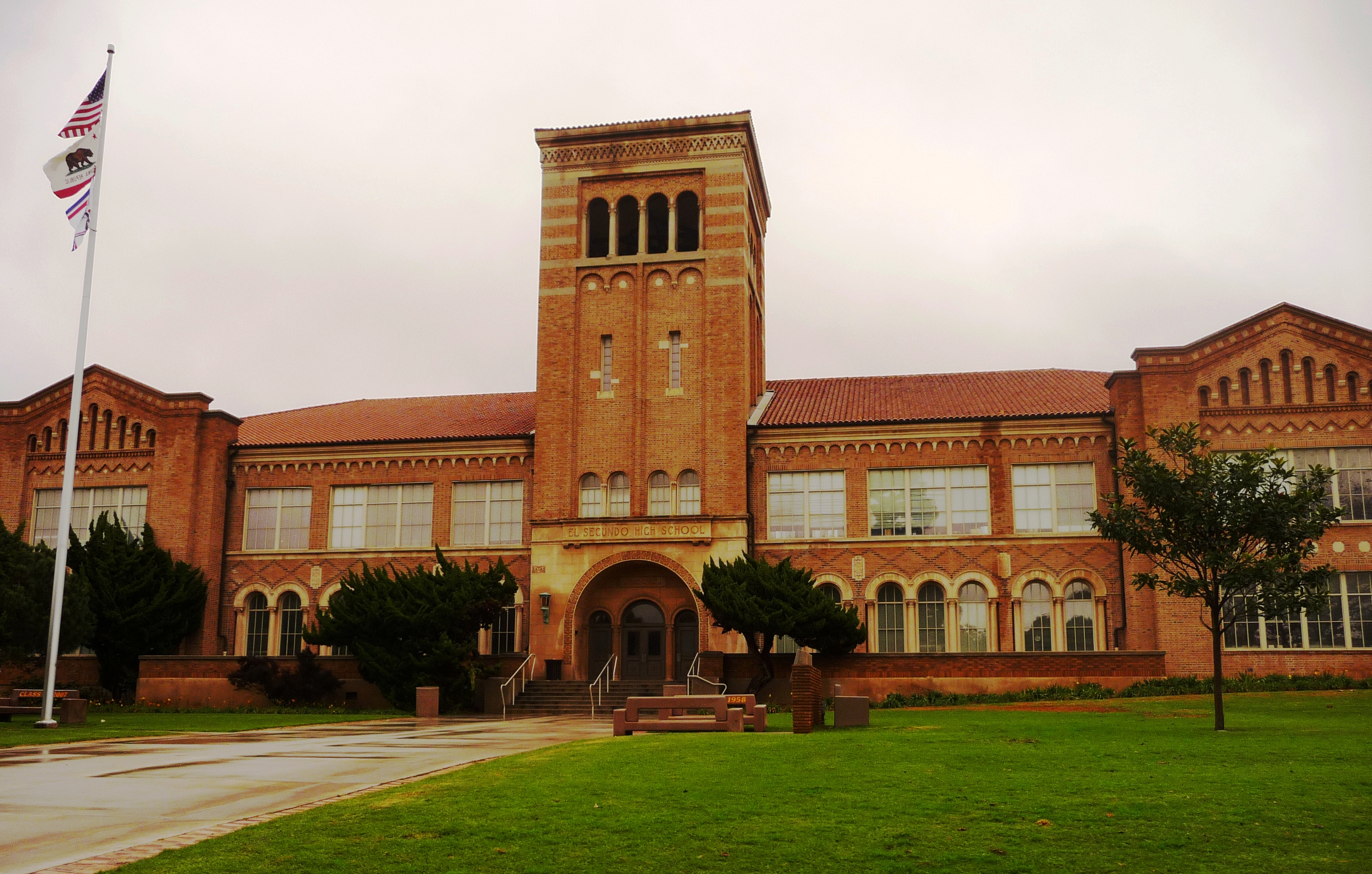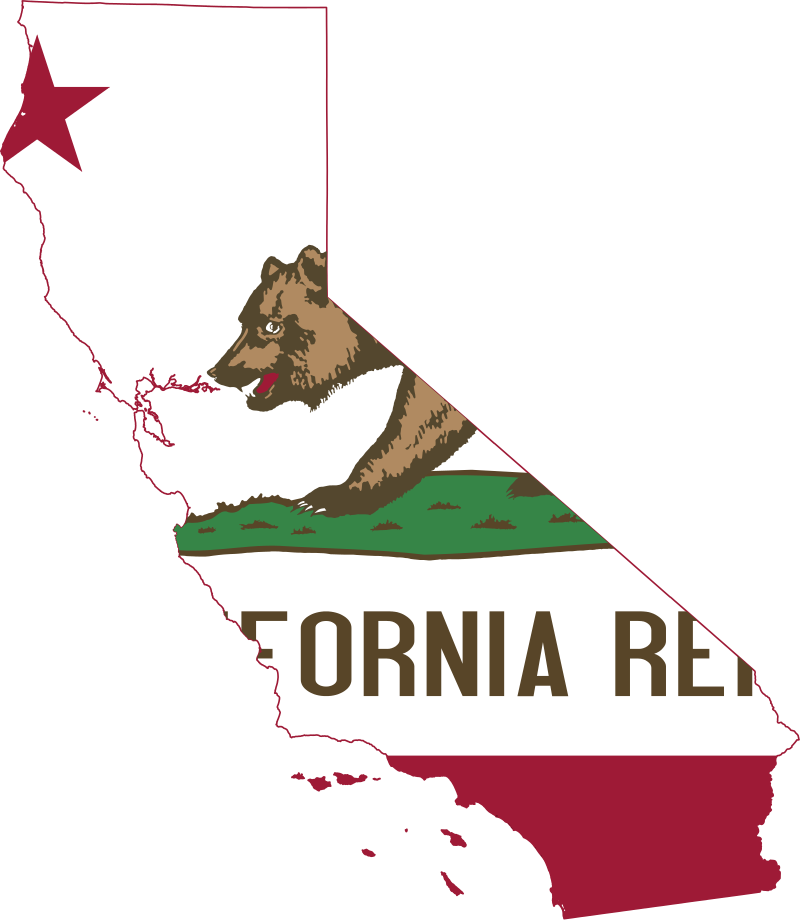
C.K. McClatchy High School, Sacramento. (Photo: SCUSD.edu)
California’s K-12 Spending Exceeds $20,000 Per Pupil
From 2010 through 2019, $76.7 billion in local school bonds were approved by voters
By Edward Ring, March 3, 2020 9:40 am
“It’s not enough. We’re still 41st in the nation in per pupil funding. Something needs to change. We need to have an honest conversation about how we fund our schools at a state and local level,”
– Governor Gavin Newsom, State of the State Address, February 12, 2020
It should come as no surprise that Governor Newsom would call for more education spending, but is he right to say that California is 41st in per pupil funding? It turns out the answer to that question is complicated.
The place to start would be the readily available data on California’s per pupil spending. The most recent compilation from Ed Week is for 2019, reporting the California average at $12,143 per pupil. This places California in 20th place among the states, which puts it in the front half of the pack.
To the uninitiated, $12,143 seems like a lot. In a classroom with 30 students, that would equate to over $300,000. If you hired an absolutely first rate teacher at the very competitive rate of $150,000 per year in pay and benefits, for a ten month school year you would still have $15,000 per month for other expenses. Isn’t that enough to rent a classroom, buy books, and share costs for a few administrative staff?
Perhaps this explains why charter schools now attract 10 percent of California’s K-12 students. $10,000 per year per student – or $12,143 per year per student, as the case may be – is enough to build an effective educational business model.
This amount, around $12,000 per year per pupil, gets batted around a lot in the media. A Google search on the sum $12,143, paired with search terms “per pupil in California” yields first page citations in Patch, Times of San Diego, Orange County Register, Governing, and others including the prestigious Public Policy Institute of California. But even proponents of increasing spending per pupil acknowledge this number is low.
As the Larry Sand documents in a recent California Policy Center article, “After a six-day teacher strike in January 2019, the district and union settled on a contract that many questioned. Now, a year later, LAUSD officials admit to spending $18,788 per student. But in a mid-January interview with EdSource, school superintendent Austin Beutner indicated that the district gets just $16,402 from the state to educate each child.”
So what is the number? How much are California’s taxpayers spending per pupil? According to LAUSD itself, that district spends $18,788 per student.
The Ed Week compilation included the following clarification: “Captures factors such as teacher and staff salaries, classroom spending, and administration, but not construction or other capital [expenditures].”
What else may be not included in this number?
To get at this, state government experts were contacted at the California Dept. of Education, the California Dept. of Finance, and Ed Data, which is “a partnership of the California Department of Education, EdSource, and the Fiscal Crisis and Management Assistance Team/California School Information Services (FCMAT/CSIS).”
Speaking and corresponding with these experts raised as many questions as it answered. But here’s a basic formula that ought to lead to a calculation of per pupil education spending:
For the most recent available historical data, start with $72.4 billion in spending in 2017-18, an amount that is found on the Ed Data home page on their “Financial Data” tab:
This figure needs to be adjusted as follows:
– deduct pre-school, adult education, and community college spending,
– add the state’s annual CalSTRS contribution,
– add debt service on school bonds (or instead, add capital spending, but a lot of debt funds go into operating budgets (or “deferred maintenance” budgets) so not sure which to pick – it should be one or the other),
– deduct from student headcount all charter school attendees,
– deduct from total revenue all funds directed to charter schools,
– verify that $72.4 billion was the entire gross amount of incoming funds.
Only a few of these amounts are readily available. Official sources did offer much. For example, it is known that roughly 10 percent of all K-12 students are enrolled in charter schools, but determining what amount of total taxpayer funding goes into charter schools is not generally known, despite the unrelenting attacks by teachers unions that claim diverting funds to charter schools is the cause of their financial challenges.
Another known variable is how much the state contributed to CalSTRS, $2.8 billion, which can be found on the CalSTRS website in their 2019-20 Annual Budget (page 47). Expect that amount to increase in the coming years as CalSTRS attempts to dig out of an unfunded liability now totaling $73.7 billion (page 24).
Turning from historical data, which is three years behind, Governor Newsom’s 2020-21 budget claims “K-12 Education Spending per Pupil” will be $17,964. This is based on “ongoing per-pupil expenditures of Prop. 98 funds of $12,600 in 2020-21,” as well as additional per-pupil expenditures of $5,364 from other sources.
Not explicit in the Governor’s Budget Report on K-12 Education, but impossible to refute if the inputs they’re providing on pages 68-69 are correct, is that California’s taxpayers will be spending a total of $119.8 billion on the 6.7 million K-12 students. And it is reasonable to assume this does not include the CalSTRS contribution from the state. It is also reasonable to assume this doesn’t include capital spending. How much is that?
If you hired an absolutely first rate teacher at the very competitive rate of $150,000 per year in pay and benefits, for a ten month school year you would still have $15,000 per month for other expenses. Isn’t that enough to rent a classroom, buy books, and share costs for a few administrative staff?
The best compiled information on capital spending, at least via bond financings, can be found on Ballotpedia’s “School Bond Elections in California” page, which reports on local and state school bond elections. According to their data, over the decade from 2010 through 2019, $76.7 billion in local school bonds were approved by voters, along with the $9.0 billion Prop. 51, approved by voters statewide in 2016. And then there are the older bonds, still outstanding. According to Ballotpedia, “from 1996 to 2006, California voters approved about $109 billion in school construction bonds at the state and local level.”
This yields impressive totals, especially when taking into account interest expense. A bond earning 5 percent, paid down over 30 years, will require total payments, interest and principle, of nearly double that much. Figure that California’s taxpayers are currently paying at least $15 billion per year to finance currently outstanding school bonds, with more on the way.
Pulling this all together offers an interesting counterpoint to the popular $12,143 per student meme that’s making the rounds. In reality, total spending, adding Prop. 98 funds and other funds from the governor’s budget, along with the state’s CalSTRS payment and payment on school bond debt, can be estimated to be around $137.6 billion, which equates to $20,642 per pupil.
One must truly wonder what charter schools could do if they had access to all that money. They don’t, and proving that would go a long way towards debunking the narrative that charter schools are the cause of financial problems for traditional public schools. It would also, of course, document a reality that is inconvenient for advocates of ever higher K-12 education spending: spending for traditional public schools, once charter school allocations and enrollments are deducted from the calculation, are even greater than $20,642 per pupil.
Does it make sense to spend even more on our K-12 public school students, when there may be other reasons for the problems? What about restoring discipline in public schools, instead of applying racial quotas to how many students can be suspended or expelled? What about reforming union work rules such as were attempted in the Vergara case, rules governing tenure, layoff and dismissal criteria, so great teachers could be fairly compensated, good teachers could be retained, and poor teachers could be fired?
For that matter, why is there no discussion anymore about just issuing school vouchers, which would solve California’s public education challenges overnight?
Heck, what about solving the real fiscal challenge facing California’s public schools, by making teachers eligible for Social Security instead of pensions, and just rolling all of the CalSTRS assets into the Social Security fund?
Or what about outlawing the teachers unions, who have turned public education into their own private monopoly?
California’s voters should ask themselves: If you had to educate K-12 students, having them in your charge 180 days per year, how well could you do it if you were paid over $20,000 per year, per student?
- Ringside: Quantifying California’s Brave EV Future - July 25, 2024
- Ringside: California’s Water Economy – The Three Biggest Choices - July 18, 2024
- Ringside: An Overview of California’s Water Economy - July 13, 2024





Another great article by Edward Ring. Hope it will be widely read, because I am repeatedly hearing a Prop 13 ad on the radio, wanting more school money that the state DOES NOT NEED (see above), which claims to have support from “some of the most conservative Republicans in the state,” (big twisted lie) in addition to accountability for spending, and all the rest of it.
Vote NO on Prop 13. And after you’ve done that, pray that it doesn’t somehow pass anyway.
This all sounds like reasonable fine….if the author wouldn’t have done exactly the same what he accuses Newsom of….telling only half of the story/leaving out what doesn’t fit his agenda (in his case, pushing for vouchers, taking away pensions from teachers and outlawing labor representation for public employees).
What private schools CAN do but public schools can’t, is selecting/segregating /not allowing certain students.
They get to pick and choose…they get to divide by ethnicity by money by religion by ability by …they get to pick the winners and reject the “losers”/pick the whites/asians and reject the browns/blacks/pick the healthy and reject the sick and the disabled.
….and then get to call it cost effective and successful.
Special ed students, those with physical, cognitive and learning disabilities, make up one in 8 public school student.
The average cost of a regular kid in the public system is about 9K a year while the cost of a special ed student is estimated to be over 26K a year, or almost three times higher.
….any guess what their share is in charter/private system?
So, the question is
…do we want to live in an America that takes care of their kids, ALL their kids…
….or do we want live in a country that segregates the poor and those in need from the rich and the fit?
….the first one sounds like what I’d consider as fitting when I hear stuff like “home of the brave”
….the other simply sounds like the return to early 20th century social-darwinism
You may want to recheck your assertion that charter schools only select students with more academic aptitude. That is strictly prohibited as a condition of operating charter schools. The students are selected by lottery. As study the California Policy Center conducted in 2015 looked at the raw data for student populations in LAUSD, comparing the traditional public high schools to the charter high schools in the Alliance Network. It found no differences in the percentages of learning disabled students (special ed), English language learners, low income students, and ethnic makeup. Nonetheless, the data also showed that the charter schools operated on a per pupil cost a third lower than the traditional public school per pupil cost, and delivered better educational outcomes. You are welcome to read the study which goes into great detail:
https://californiapolicycenter.org/analyzing-the-cost-and-performance-of-lausd-public-high-schools-and-la-alliance-charter-high-schools/
Volker Loeper, As Education scholar Lance Izumi explains: “According to a 2017 study by the school-research-and-rating organization GreatSchools, there were 156 public schools in California ‘that are providing strong results for African-American students and Hispanic students.’ While only a little more than one in 10 public schools statewide is a public charter school, among these 156 high-performing schools, nearly one out of three was a charter school,” Izumi said.
“School districts can keep students from leaving the regular public schools by simply doing a better job of educating them. It’s within their control.”
“Make no mistake, parents and their children want more, not less, charter schools,” Izumi said. “That is why there are lotteries to determine admission to many charter schools because there are too few spaces for the kids who want to attend.”
I hope Edward Ring is still monitoring this page.
Thanks for the detailed analysis and for tracking down data which should be easily accessible to inform the public, especially when we were asked to support Proposition 13, another state-wide school bond measure. As of today, three days after the election, it appears the bond was defeated. Both proponents and opponents should determine why this happened, as the issue of school funding is certain to remain a perennial ballot item.
It’s possible that more discriminating voters resented the insertion of a give-away to developers that would have freed them from school impact fees when building new multi-family developments around subway stops and bus stations. Governor Newsome neglected to include that fact in his avid promotion of the proposition. That’s not good government.
As thorough as this article is in including bond costs and CalSTRS pension costs, there is no mention of CalPERS, which is the giant pension covering non-credentialed school workers. This is, like CalSTRS, a major expense for schools, and seems like a significant omission in the estimated total of $20,064. Would it be possible to estimate the CalPERS cost and incorporate it in a new, revised cost per student?
You’re right that there is no separate mention of CalPERS payments in the article, because there is no direct payment by the State of California into the CalPERS fund, even though most of the non-faculty personnel in the public K-12 system are CalPERS participants. But all regular payments into CalPERS and CalSTRS were taken into account. They are paid through direct contributions to those pension funds by the payroll departments of the many public school districts and county offices of public education, so the the revenue sources identified in the article cover those payments.
This doesn’t mean, however, that it wouldn’t be accurate to impute an additional cost that is accrued but not paid, or paid adequately, since both CalPERS and CalSTRS are grossly underfunded and are systematically increasing the payment rates they require in order to catch up. Making that calculation depends on a range of assumptions and it is safe to say that even using conservative assumptions the result would be even higher costs per pupil than what was estimated in this article.
My MAIN point was about public vs private…but you zoomed in on the one point where I mentioned charter as well?
Can I assume then that you agree with my point when it comes to private schools vs public?
….and of course charters are not off the hook either, since the whole model is based on circumventing the rules your standard public school is bound by, like selecting their own students.
Mentally and/physically handicapped children are a giant cost driving factor on the public system that others get to avoid.
Of course charters, because of public funding, have to actually work harder in that category than private schools, but that doesn’t mean it’s not happening there either.
As long as people look for solutions through segregation, they are simply creating more “usfournomore” failing churches, instead of positively injecting the system with the presence and participation of good people.
What would public schools/american education look like today if the people of reason, of conservatism, of faith…would have decided to take the public system head on and become it’s most hard working and influential part, instead of segregating themselves and their kids out of it?
What would we have today if more would have done the “Jesus with skin on” thing instead of the “my kids deserve better than yours” part?
The original article addresses a very important problem, overspending/waste within the public system.
What it doesn’t do is providing a well rounded perspective of fixing it for all…just a solution to keep the elite out and far away from it
….which brings us back to the social-darwinism undertone presented …